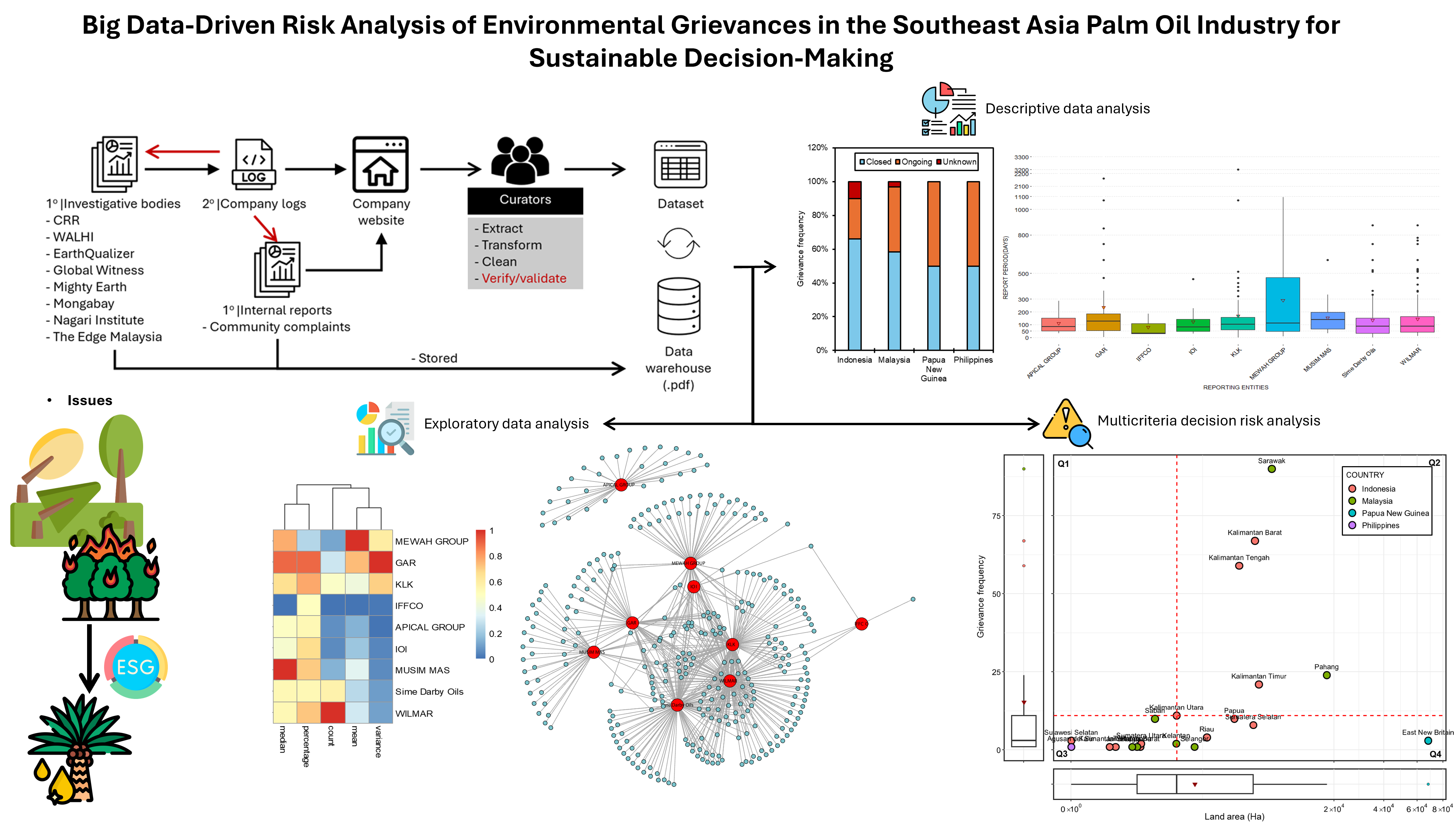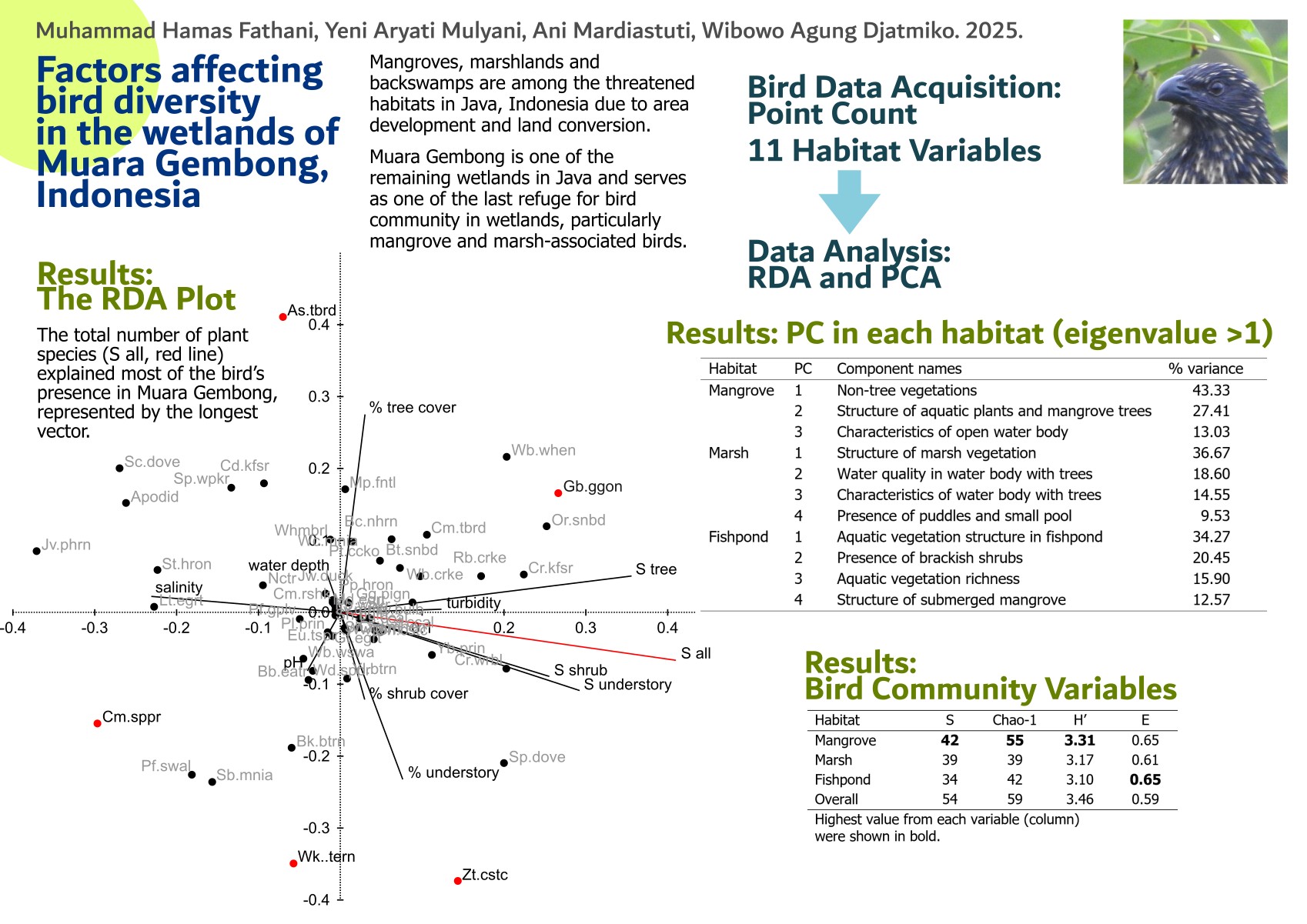Crafting Local Institution Using Social-Ecological System Framework for Sustainable Rattan Governance in Lore Lindu National Park
Abstract
Rattan is the most important non-forest timber product utilized by communities adjacent Lore Lindu National Park (LLNP). The establishment community conservation agreement (CCA) in 2001 was unable to prevent rattan depletion. Then, a local institution called community conservation partnership (CCP) has been recently proposed. Therefore, the objective of this study is to explore how to craft a local institution of CCP for sustainable rattan governance in LLNP using Social-Ecological Systems (SES) Framework. The study was conducted in LLNP area and Ngata Toro, a buffer zone village of LLNP. We conducted rattan inventory and collected social data by interview for analyzing CCP development using SES framework. The results showed that CCP is most likely to be successful in implementing due to several reasons. Firstly, the establishment of constitutional-choice rules made clear the nested enterprise. Secondly, the reallocation of CCP location to the traditional zone increase the boundary clarity. Thirdly, transferring rights to the Ngata Toro community will make effective co-management, increase the legitimacy of rattan utilization, decrease potential conflicts among resource unit users and reducing monitoring cost. Finally, deciding the rattan harvesting quota will ensure the rattan ecological and livelihood sustainability. With the clarity of system boundaries and property rights, we argue that CCP institutions will bring many benefits in many ways. Overall, most variables of SES framework can be used to analyses the readiness of CCP institutional arrangement for sustainable rattan management in LLNP.
References
Anderies, M. J., Janssen, M. A., & Schlager, E. (2016). Institutions and the performance of coupled infrastructure systems. International Journal of the Commons, 10(2), 495–516. https://doi.org/10.18352/ijc.651.
Barrios, J. C. H., Anten, N. P. R., & Ramos, M. M. (2014). Sustainable harvesting of non-timber forest products based on ecological and economic criteria. Journal of Applied Ecology, 52, 389–401. https://doi.org/10.1111/1365-2664.12384
Berkes, F., George, P., & Preston, R. (1991). Co-management: the evolution of the theory and practice of joint administration of living resources. Paper presented at The Second Annual Meeting of IASCP University of Manitoba, Winnipeg, Canada, September 26–29.
Berkes, F. (2009). Evolution of co-management: Role of knowledge generation, bridging organizations and social learning. Journal of Environmental Management 90, 1692–1702. https://doi.org/10.1016/j.jenvman.2008.12.001
Binder, C. R., Hinkel, J., Bots, P. W. G., & Pahl-Wostl, C. (2013). Comparison of frameworks for analyzing social-ecological systems. Ecology and Society, 18(4), 26. https://doi.org/10.5751/ES-05551-180426
Blomkvist, P. (2013). An analytical framework for common-pool resource–large technical system (CPR-LTS) constellations. International Journal of the Commons, 7(1), 113–139. https://doi.org/10.18352/ijc.353
Blomquist, W., Schlager, E., & Tang, S. Y. (1994). Regularities from the field and possible explanations. In Rules, Games & Common-pool Resources. Ostrom, E, Gardner R, Walker J, eds. Ann Arbor: University of Michigan Press.
Burkard, G. (2007). Two Types of “desa”: Community Representation Communal Identity and Property Relation in the Kulawi Valley, Central Sulawesi, Indonesia. Palu, Indonesia. Discussion Paper Series No. 19, Research Project on Stability of Rain Forest Margins (STORMA).
Delgado-Serrano, M. D. M., & Ramos, P. A. (2015). Making Ostrom's framework applicable to characterize social ecological systems at the local level. International Journal of the Commons, 9(2), 808–830. https://doi.org/10.18352/ijc.567
Dohrenbusch, A. (2006). Forest management systems and diversified production - principles of sustainable management of renewable resources. Paper presented at Sino-german Symposium 2006: The sustainable harvest of non-timber forest products in China. Strategies to balance economic benefits and biodiversity conservation. Beijing: The Sino-German Center for Research Promotion.
Dransfield, J. (1974). A short guide to rattans. Bogor: BIOTROP
Dudley, N. (ed.). (2008). Guidelines for applying protected area management categories. Gland: International Union for Conservation of Nature (IUCN). Retrieved from https://portals.iucn.org/library/sites/library/ files/documents/PAG-021.pdf
https://doi.org/10.2305/IUCN.CH.2008.PAPS.2.en
Dunggio, I., & Gunamawan, H. (2009). An overview on the history of national park management policy in Indonesia. Jurnal Analisis Kebijakan Kehutanan, 6(1), 43–56.
Feeny, D., Berkes, F., McCay, B.J., & Acheson, J.M. (1990). The tragedy of the commons: Twenty-two years later. Human Ecology, 18(1),1–19. https://doi.org/10.1007/ BF00889070
Hall, P., & Baw, K. S. (1993). Methods to assess the impact of extraction of non-timber tropical forest products on plant populations. Economic Botany, 47, 234–247. https://doi.org/10.1007/BF02862289
Hammergren, L. (1998). Political will, constituency building, and public support in rule of law programs. Center for Democracy and Governance Bureau for Global Programs, Field Support, and Research U.S. Agency for International Development.
Hamzari. (2011). Community-based sustainable rattan conservation: A case study in Lore Lindu National Park, Central Sulawesi. Biodiversitas, 12(4), 241–245. https://doi.org/10.13057/biodiv/d120410
Hardjoprajitno, S. (2000). Role of forest survey and mapping in maintaining forest sustainability as an input to regional autonomy. Globe, 2(1), 613.
Hess, B. (2013). Simulation of rattan harvests in Indonesia. Different harvesting pressures and the resulting patterns [thesis]. Sweden: Swedish University of Agricultural Sciences.
Ichsan, A. C. (2008). Prospects and challenges of community conservation agreements in the Lore Lindu National Park [thesis]. Bogor: IPB University.
[ITTO] International Tropical Timber Organization, [MoF] Ministry of Forestry. (2008). Technical report: inventory of rattan sanding stock in natural forest and plantation. Jakarta: ITTO and MoF of Indonesia.
Januminro. (2000). Potency of Indonesian rattan, cultivation, processing, quality standards, and the prospects of administration. Yogyakarta: Penerbit Kanisius.
Khan, A. (2008). A solution alternative on law and regulations problem: A lesson of institutional arrangement. Jurnal Manajemen Hutan Tropika, 14(1), 47–53.
Kosmaryandi, N., Basuni, S., Prasetyo, L. B., & Adiwibowo, S. (2012). New idea for national park zoning system: A synthesis between biodiversity conservation and customary community's tradition. Jurnal Manajemen Hutan Tropika, 18(2), 69–77. https://doi.org/10.7226/jtfm.18.2.69
Larson, A. M., & Ribot, J. C. (2004). Democratic decentralization through a natural resource Lens: An introduction. European Journal of Development Research, 125. https://doi.org/10.1080/09578810 410001688707
Mahfud R.., & Toheke, R. P. (2003). Customary community of Adat Ngata Toro, Central Sulawesi. In: Kleden, E.O., Chidley, L., Indradi, Y., editor. Forest for future: Indigenous Forest Management in the Middle of a Changing World. Jakarta: Aman-DTE.
Massiri, S. D., Nugroho, B., Kartodihardjo, H., & Soekmadi, R. (2015). Institutional sustainability barriers of community conservation agreement as a collaboration management in Lore Lindu National Park. Jurnal Manajemen Hutan Tropika. 21(3), 147–154. https://doi.org/10.7226/jtfm.21.3.147
Massiri, S. D., Nugroho, B., Kartodihardjo, H., & Soekmadi, R. (2019). Institutional sustainability of a community conservation agreement in Lore Lindu National Park. Forest and Society, 3(1), 64–76. https://doi.org/10.24259/fs.v3i1.5204
McGinnis, M. D., & Ostrom, E. (2014). Social-ecological system framework: Initial changes and continuing challenges. Ecology and Society, 19(2), 30. https://doi.org/10.5751/ES-06387-190230
Ostrom, E. (1999). Private and common property. Retrieved from http://encyclo.findlaw.com/2000 book.pdf.
Ostrom, E. (2009). A general framework for analyzing sustainability of social-ecological systems. Science, 325, 419–422. https://doi.org/10.1126/science.1172133.
Pei, S., Zhang, G., & Huai, H. (2009). Application of traditional knowledge in forest management: Ethnobotanical indicators of sustainable forest use. Forest Ecology and Management, 257, 2017–2021. https://doi.org/10.1016/j.foreco.2009.01.003
Powling, A. (2004). Rattan: taxonomy and ecology. Indonesia Institute of Sciences (LIPI).
Purnomo, H., Mendoza, G. A., & Prabhu, R. (2004). Model for collaborative plan of community managed resources based on qualitative soft systems approach. Journal of Tropical Forest Sciene,16(1), 106–131.
Ribot, J. (2002). Democratic decentralization of natural resources: Institutionalizing popular participation. Washington, DC: World Resources Institute. https://doi.org/10.1057/9781403981288_6
Schlager, E., & Ostrom, E. (1992). Property-rights regimes and natural resources: A conceptual analysis. Land Economics, 68(3), 249–262. https://doi.org/10.2307/3146375
Sen, S., & Nielsen, J. R. (1996). Fisheries co-management: A comparative analysis. Marine Policy, 20(5), 405–418. https://doi.org/10.1016/0308-597X(96)00028-0
Shreedhar, G., Tavoni, A., & Marchiori, C. (2018). Monitoring and punishment networks in a common pool resource dilemma: experimental evidence. Centre for Climate Change Economics and Policy Working Paper No. 327 ISSN 2515-5709. Grantham Research Institute on Climate Change and the Environment Working Paper No. 292 ISSN 2515-5717 (Online). Retrieved from http://www.uh.edu/~nfelt/papers/belief.pdf.
Sikor, T., He, J., & Lestrelin, G. (2017). Property rights regimes and natural resources: A conceptual analysis revisited. World Development, 93, 337–349 https://doi.org/10.1016/j.worlddev.2016.12.032.
Wade, R. (1987). The management of common property resources: collective action as an alternative to privatization or state regulation. Cambridge Journal of Economics, 11, 95–106. https://doi.org/10.1093/oxfordjournals.cje.a035024
Widayati, A., Jones, S., & Carlisle, B. (2010). Accessibility factors and conservation forest designation affecting rattan cane harvesting in Lambusango Forest, Buton, Indonesia. Human Ecology, 38(6), 731–746. https://doi.org/10.1007/s10745-010-9358-7
Authors

This work is licensed under a Creative Commons Attribution 4.0 International License.
Jurnal Manajemen Hutan Tropika is an open access journal which means that all contents is freely available without charge to the user or his/her institution. Users are allowed to read, download, copy, distribute, print, search, or link to the full texts of the articles in this journal without asking prior permission from the publisher or the author. This is in accordance with the Budapest Open Access Initiative (BOAI) definition of open access.








